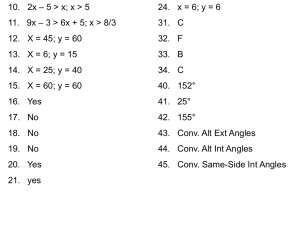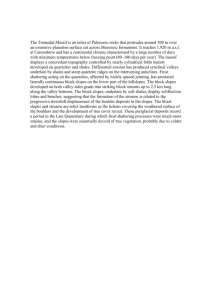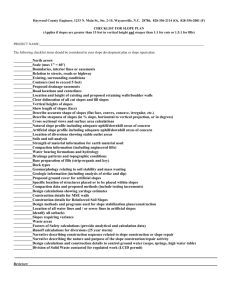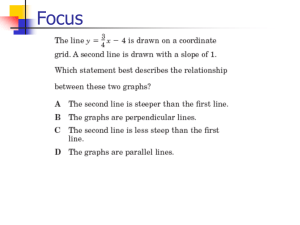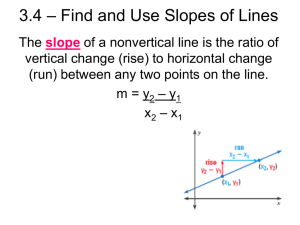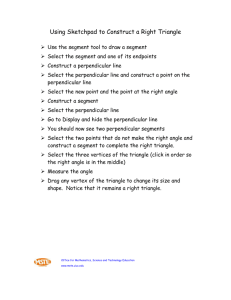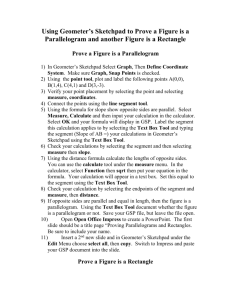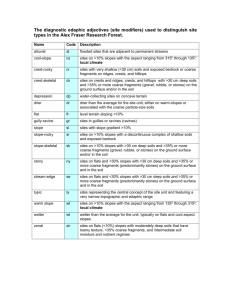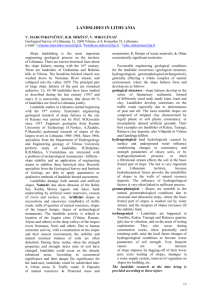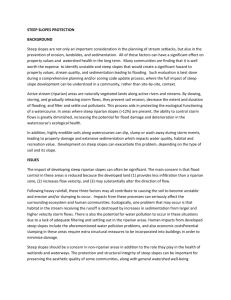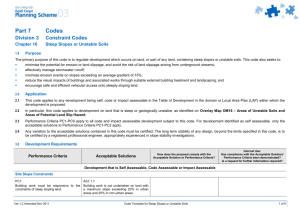Forming A Square
advertisement
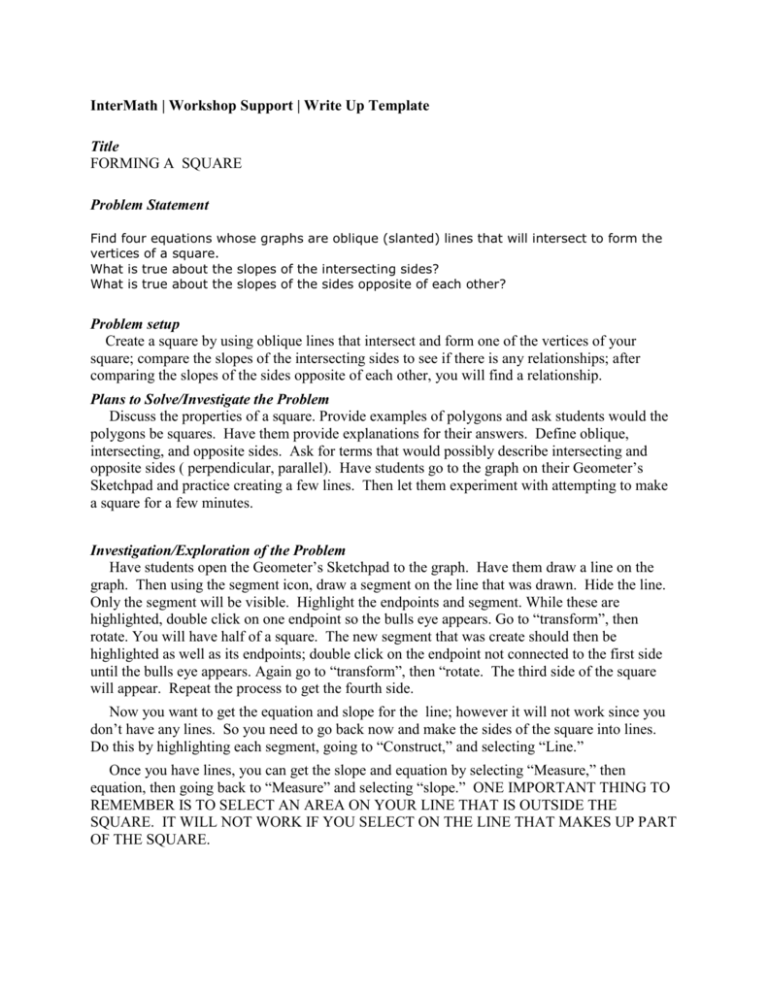
InterMath | Workshop Support | Write Up Template Title FORMING A SQUARE Problem Statement Find four equations whose graphs are oblique (slanted) lines that will intersect to form the vertices of a square. What is true about the slopes of the intersecting sides? What is true about the slopes of the sides opposite of each other? Problem setup Create a square by using oblique lines that intersect and form one of the vertices of your square; compare the slopes of the intersecting sides to see if there is any relationships; after comparing the slopes of the sides opposite of each other, you will find a relationship. Plans to Solve/Investigate the Problem Discuss the properties of a square. Provide examples of polygons and ask students would the polygons be squares. Have them provide explanations for their answers. Define oblique, intersecting, and opposite sides. Ask for terms that would possibly describe intersecting and opposite sides ( perpendicular, parallel). Have students go to the graph on their Geometer’s Sketchpad and practice creating a few lines. Then let them experiment with attempting to make a square for a few minutes. Investigation/Exploration of the Problem Have students open the Geometer’s Sketchpad to the graph. Have them draw a line on the graph. Then using the segment icon, draw a segment on the line that was drawn. Hide the line. Only the segment will be visible. Highlight the endpoints and segment. While these are highlighted, double click on one endpoint so the bulls eye appears. Go to “transform”, then rotate. You will have half of a square. The new segment that was create should then be highlighted as well as its endpoints; double click on the endpoint not connected to the first side until the bulls eye appears. Again go to “transform”, then “rotate. The third side of the square will appear. Repeat the process to get the fourth side. Now you want to get the equation and slope for the line; however it will not work since you don’t have any lines. So you need to go back now and make the sides of the square into lines. Do this by highlighting each segment, going to “Construct,” and selecting “Line.” Once you have lines, you can get the slope and equation by selecting “Measure,” then equation, then going back to “Measure” and selecting “slope.” ONE IMPORTANT THING TO REMEMBER IS TO SELECT AN AREA ON YOUR LINE THAT IS OUTSIDE THE SQUARE. IT WILL NOT WORK IF YOU SELECT ON THE LINE THAT MAKES UP PART OF THE SQUARE. 8 6 KJ: y = 0.50x+5.03 Sl ope KJ = 0.50 4 J KJ': y = -2.00x-14.90 2 Sl ope KJ' = -2.00 K -10 -5 5 -2 10 K' JK': y = -2.00x+0.00 -4 Sl ope JK' = -2.00 J' K'J': y = 0.50x-2.42 -6 Sl ope K'J' = 0.50 -8 Students should be able identify the perpendicular lines and the parallel lines. Comparing the equations and slopes the lines, we find the slopes of the perpendicular lines are opposite reciprocals. In the diagram above the slope for line KJ is negative two. The opposite reciprocal is positive .50. The slopes of the sides opposite of each other are the same. Extensions of the Problem Using properties of other polygons, students could attempt to graph lines creating the polygons. Using their create polygons, they could look for possible lines of symmetry. They could also attempt to create three dimensional figures. Students could also work algebraic problems and then graph lines. Author & Contact Barbara Rodgers Insert Email Link(s) to resources, references, lesson plans, and/or other materials Link 1 Link 2 Important Note: You should compose your write-up targeting an audience in mind rather than just the instructor for the course. You are creating a page to publish it on the web.

